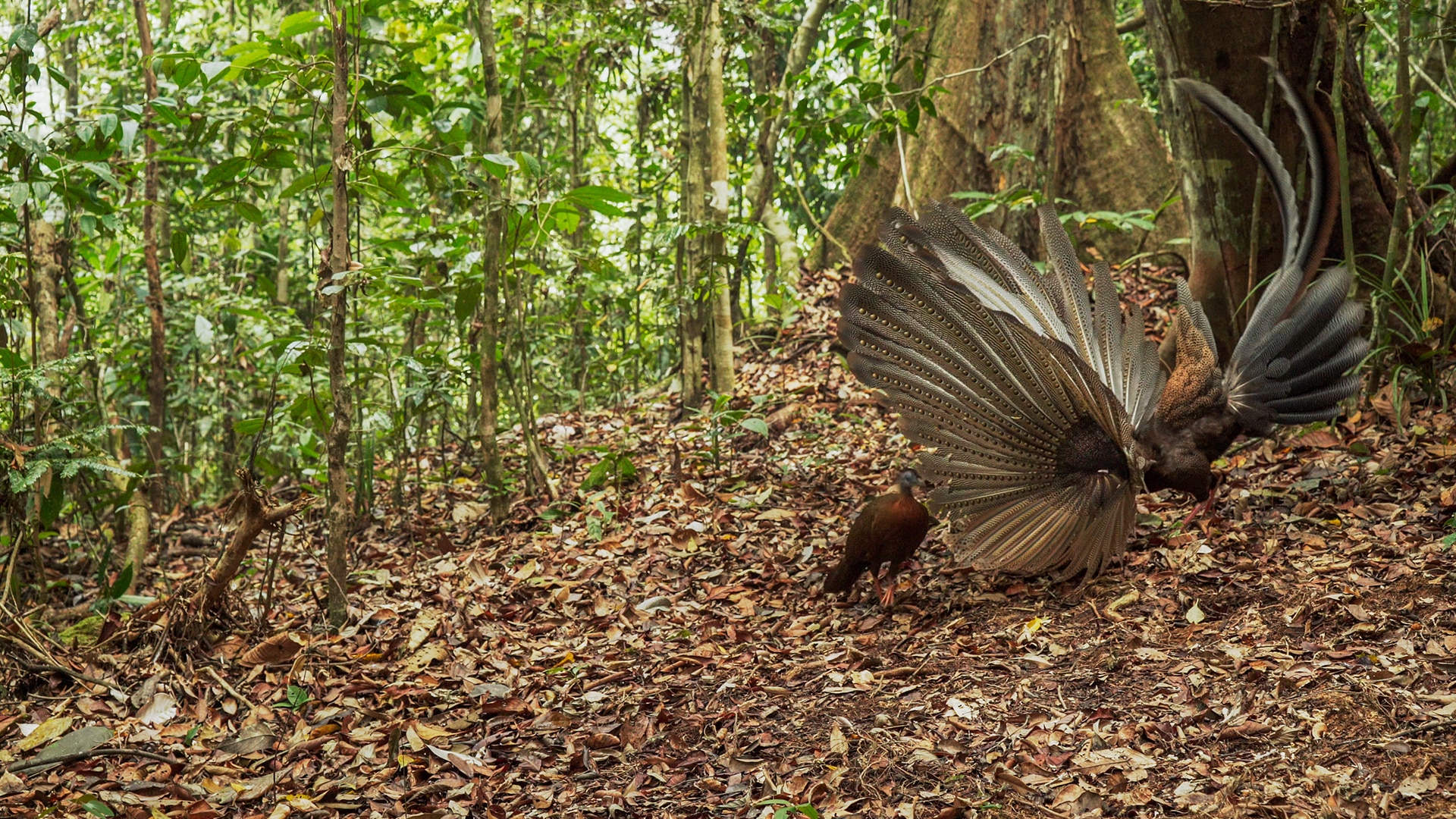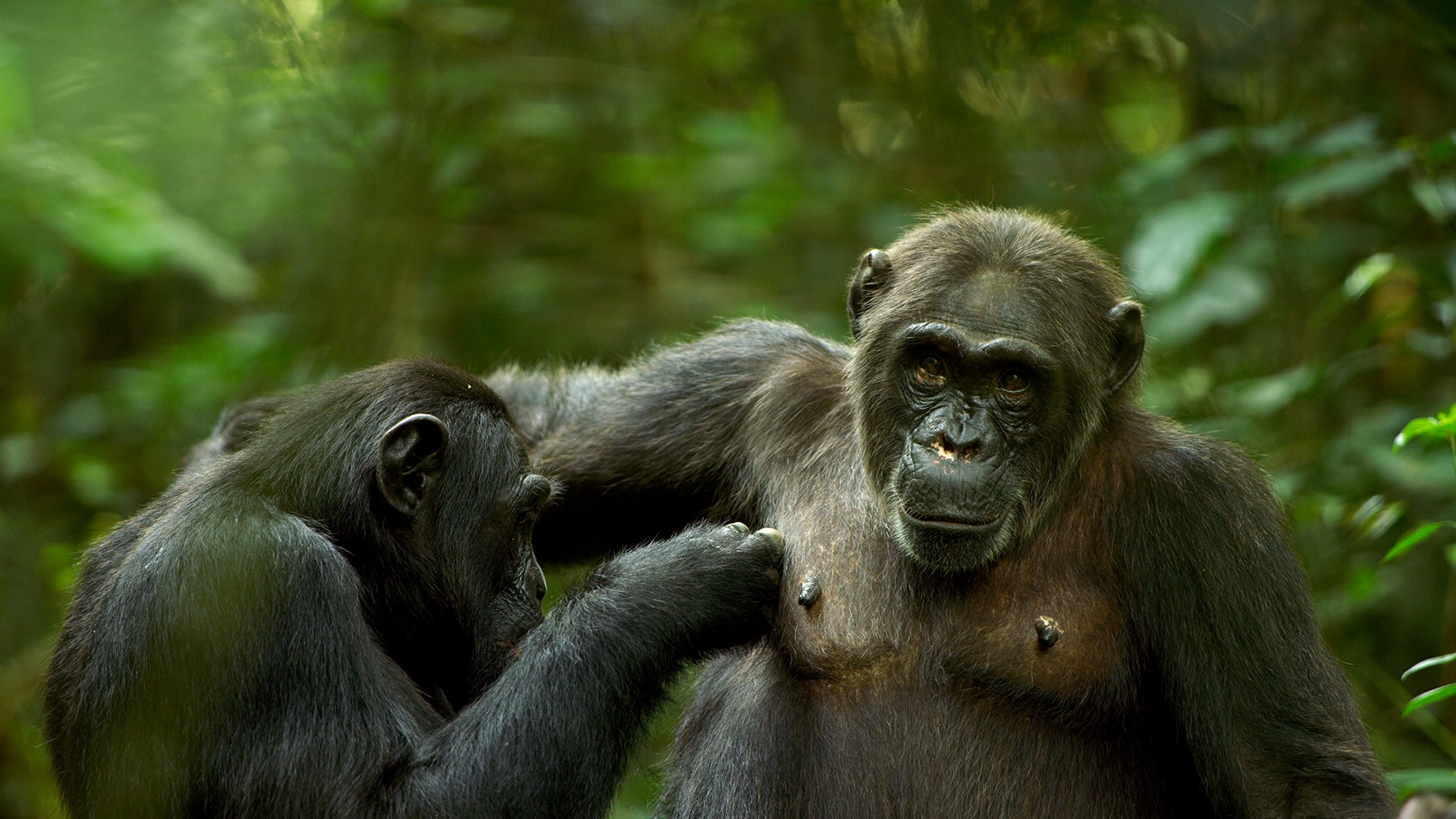BBC Earth newsletter
BBC Earth delivered direct to your inbox
Sign up to receive news, updates and exclusives from BBC Earth and related content from BBC Studios by email.
The Mating Game
We all have our own techniques when it comes to looking for love.
For animals, sex simply means spreading your genes as far and wide as possible. However, just because mating rituals and sex are a means to an end, that doesn’t mean it’s an uncomplicated process. Whether they’re mating for life or just for the breeding season, each species has evolved its own recipe for sexual success. From bravura courtship performances that require their own stage to impersonating the opposite sex, the courtship and mating rituals of these animals will astonish you.

The African bullfrog’s mating ritual is complex and brutal. Young male African bullfrogs congregate in small pools of shallow water. The central areas of these breeding pools, or ‘leks’, are occupied by the larger males, who chase off their smaller competition. They also fight amongst themselves, sometimes resulting in injury or even death, as the most dominant males attempt to stop the others from breeding. A female will swim up to the group in the breeding pool and avoids the smaller males around the outside by swimming underneath them to emerge in the centre of the mass of bullfrogs. She is now in the domain of one of the large dominant males that has fought off the others, and subsequently mates with him.1

There aren’t many creatures that prepare their own courtship arena with as much care as the male Argus Pheasant of Southeast Asia. His impressive plumage, covered in ocelli (eyespot markings), deserves a spotlight, so he finds an area around 6-7m² (72ft²) within the lowland jungle. He meticulously prepares it by removing any forest debris that might detract from his performance, then sends out early morning ‘invitations’, using a particular call to attract females. When a female accepts and joins him in his ‘arena’, he circles around her, attempting to impress her with a foot-stomping dance. This concludes with a striking display in which he uses his wings to create a fan of feathers. If she is suitably admiring, they mate.2

If you’re hoping for a story of gentle romance, look away now. Female Anglerfish were first recorded and studied in 1833, but for a long time no-one knew what the males looked like. It wasn’t until 1924 that biologists realised that the small fish found hanging off female anglerfish were actually her mating partners, not her offspring as previously thought.
How does it work? You’ll wish you hadn’t asked. When they want to mate, the male anglerfish eats a hole in the side of the much larger female, and embeds himself. Their skin and blood vessels and digestive systems fuse together, and his eyes and fins and some of his organs drop off or wither away. He effectively becomes a parasite living on the female; his only role is to occasionally provide sperm for breeding.3

Chimpanzees take the brutality of the African bullfrogs up to new levels. The males terrorise and bully the females into mating with them, waging campaigns of violence that include charging at the females, biting, hitting, and sometimes wounding or injuring them. This aggressive behaviour can go on for two to three years before mating actually occurs.
The theory is that females are understandably so intimidated by this long-term aggression from the males that when they are fertile, they won’t resist when a male tries to mate with them. It also means that this particular female won’t then mate with another male for fear of incurring more violence.4

Ostriches, as well as being the largest living birds (adults can be 2.75m / 9ft tall, although half of an ostrich’s height is its neck), are also one of the 3% of birds to have a penis. Most birds don’t have penises, and mate using a ‘cloacal kiss’; the cloaca being the bird’s excretory passage. The male bird passes sperm to the female when the both cloaca are engaged.
Ratites, a group to which ostriches belong along with other flightless birds like emus, rhea and kiwis, all have penises. They enlarge them using a burst of lymphatic fluid, rather than with blood like most mammals and reptiles.
Females know a male is entering the breeding season when his shins change from a pale pink to a rather dashing crimson red.5

Certain male ruff birds mating habits are quite extraordinary. Not happy with the status quo, a small number of males engaging in cross-dressing. Males will gather in large groups and display their neck feathers to attract females, who indicate their willingness to mate by bending over and presenting their genitals.6 However, lurking unnoticed among the exhibitionist males is the group of cross-dressing birds that resemble females, but are actually males with less flamboyant plumage. The faux females go unnoticed by the posturing males, allowing them to dash in at the last minute and mate with the genuine female. Ironically, these crafty males have especially large testes.7
This female mimicking behaviour is genetic, according to research by the University of Sheffield. It allows ‘girlfriend stealers’ to live among territorial males without attracting aggressive behaviour.

Brace yourself for the nudibranch, or sea slug…. not the most attractive of creatures but what a sex life! Sex is a two-way street for these molluscs as both partners have a penis and vagina, both of which are used in mating. Not only are nudibranchs hermaphrodite, but they also discard their penises 20 minutes after sex – and a new one appears virtually the next day! Scientists believe this is a way for the molluscs to remove rival sperm from a mate’s vagina, as sea slug penises have tiny spines which are often coated with sperm after mating. By discarding the penis, they are making sure that their sperm will not be contaminated by that of their rival during their next sexual encounter.
Biologists discovered that 24 hours or more after the sea slug’s penis has been cast-off following mating, a tightly coiled spiral structure inside the animal uncoils to become the replacement penis.8
There are obviously some similarities between the courtship and mating rituals of animals and our own; both involve display, preening, selection based on attributes, possessiveness, and a certain amount of crafty behaviour. We all know that finding the right mate is a complicated business, but some of these animals make our own efforts look positively puny. So next time you’re about to swipe right, just be grateful that that’s all you have to do.
Featured image by © Temujin Johnson
1. African bullfrogs 2. Ruff bird mating ritual 3. Angler fish mating 4. Chimpanzee brutal mating habits 5. Ostrich's pink shins 6. Male ruffs presenting their genitals 7. Large ruff bird testes 8. Nudibranch replacement penis